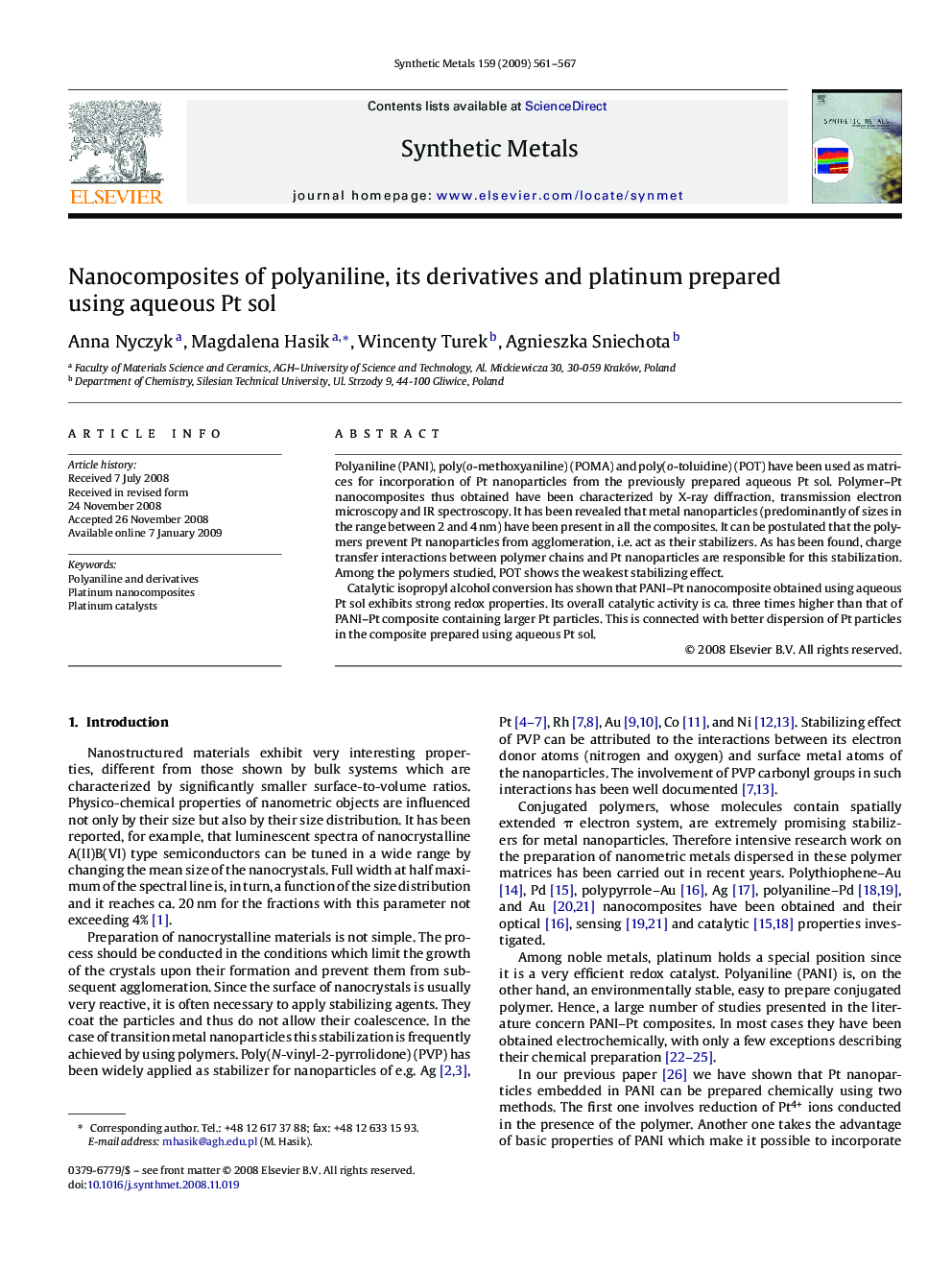| Article ID | Journal | Published Year | Pages | File Type |
|---|---|---|---|---|
| 1443369 | Synthetic Metals | 2009 | 7 Pages |
Polyaniline (PANI), poly(o-methoxyaniline) (POMA) and poly(o-toluidine) (POT) have been used as matrices for incorporation of Pt nanoparticles from the previously prepared aqueous Pt sol. Polymer–Pt nanocomposites thus obtained have been characterized by X-ray diffraction, transmission electron microscopy and IR spectroscopy. It has been revealed that metal nanoparticles (predominantly of sizes in the range between 2 and 4 nm) have been present in all the composites. It can be postulated that the polymers prevent Pt nanoparticles from agglomeration, i.e. act as their stabilizers. As has been found, charge transfer interactions between polymer chains and Pt nanoparticles are responsible for this stabilization. Among the polymers studied, POT shows the weakest stabilizing effect.Catalytic isopropyl alcohol conversion has shown that PANI–Pt nanocomposite obtained using aqueous Pt sol exhibits strong redox properties. Its overall catalytic activity is ca. three times higher than that of PANI–Pt composite containing larger Pt particles. This is connected with better dispersion of Pt particles in the composite prepared using aqueous Pt sol.
